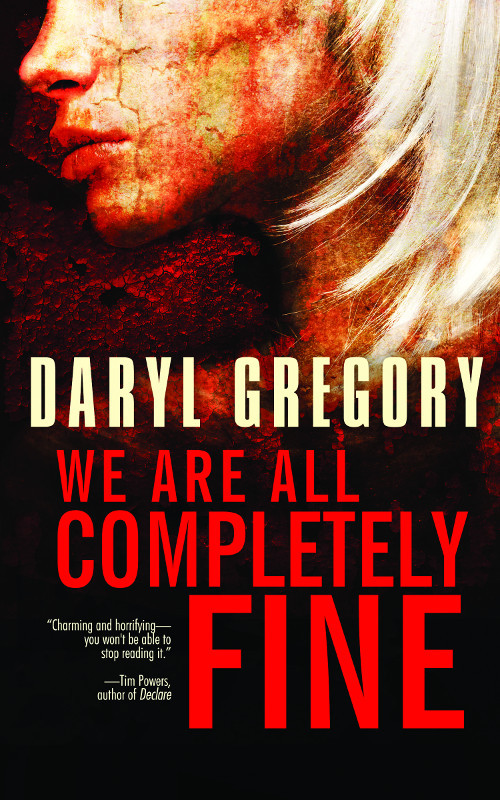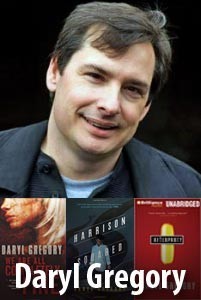A trifecta of recent interviews with the extraordinary Daryl Gregory

Three recent interviews with Daryl Gregory, author of the Nebula, Shirley Jackson, Theodore Sturgeon, and Locus award nominee WE ARE ALL COMPLETELY FINE.
At SFREVU:
SFRevu: Your novella, We Are All Completely Fine, came out in August 2014 from Tachyon, but Harrison Squared, its prequel, or first of its prequels, just came out in late March 2015 from Tor. Now, that doesn’t seem like quite enough time to have written We Are All Completely Fine, then decide to write a novel to set it up, so how did that happen, anyway?
Daryl Gregory: It happened in the most complicated way possible. I wrote the first draft of Harrison Squared as a middle-grade adventure novel, intending to write something light and fun with as much banter as possible. My idea of light and fun, however, was out of step with middle grade editors. Several of them said that what I’d written was way too scary for little kids. (I don’t think this is true. I loved gruesome stuff when I was ten. But hey, that’s the market.)
I was ready to set aside the book as an experiment, but it did start me thinking about what kind of PTSD a grown-up Harrison would have to cope with. And what about all those sole survivors of horror novels and movies? Surely they needed a lot of therapy. Jacob Weisman of Tachyon had been after me to write a novella for him, so I pitched him the idea of a therapy group made up of final girls and last men standing. He thought it was a hilarious idea. I kept trying to explain that it wasn’t funny. We still argue about whether the novella is a comedy. I think we’ve compromised on ‘ultra-dark comedy’.
While I was writing the novella, Tor offered to buy Harrison Squared, but they were interested in YA, not middle grade, and asked if I’d be willing to change it. I said, if you’re willing to pay me, I’m interested. But this actually solved the scariness problem for me. An older protagonist, and therefore older readers, would be able to handle the creepy stuff, and allow me to spend more time with the monsters, which is always my favorite part of horror stories.
So, as soon as I finished We Are All Completely Fine, I rewrote Harrison Squared from scratch, using that first draft as a kind of detailed outline that was missing some of the story. But because I now had written the adult Harrison, that changed how I wrote him as a kid. There’s still a big gap between the boy he was and the man he becomes–but now I know what that arc is.

DF: I know you have been asked this a thousand times, but take us through and compare your particular processes for doing a novel vs. a comic series.
Daryl Gregory: Comics are short, and they’re all about structure–hitting the right beats, exactly at the right turn of the page, and ending with a snap or a cliffhanger on the last page. My job is to get the story, structure, and dialogue to work. But most of the heavy lifting for the emotion in the book, and its effectiveness, is in the hands of the artist. My job is to put the minimum number of words on the page and let the art shine. I often write comics in outline mode, mapping out each page, before I write any dialogue.
With a novel, all the heavy lifting is on me. That’s both wonderful and daunting. I do outline my novels, but the form is so flexible. Every book I’ve written has a different structure, a different length, and a different tone. And I’m constantly rewriting. You’re building a house (or a castle, if it’s that kind of novel) out of sentences, and get them wrong and the whole thing comes crashing down.

THE DAILY TIMES (Maryville, TN):
As for his subject matter, the author chuckled and said, “I don’t think I had any choice. I started reading, and it seemed like it was the weird stuff and the fun stuff that kept drawing me back.”

For information on WE ARE ALL COMPLETELY FINE, visit the Tachyon page.
Cover design by Elizabeth Story.
Cover for HARRISON SQUARED by Allen Williams.
